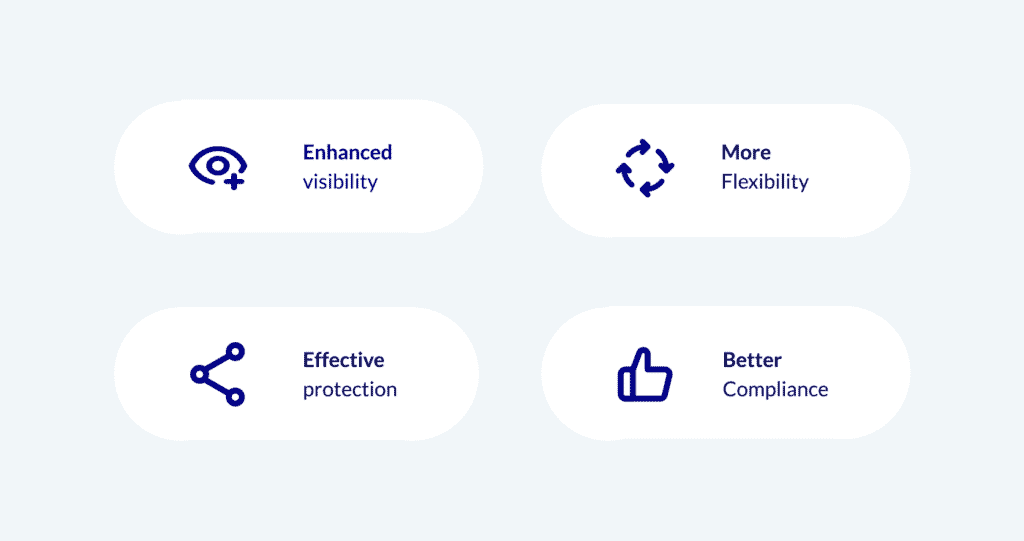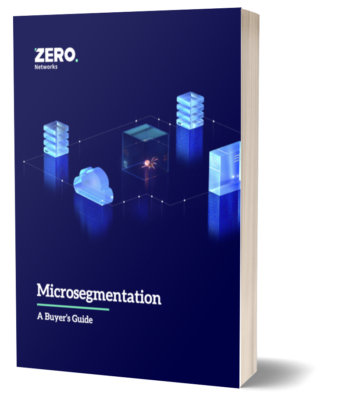What is Cloud Workload Protection?
First, let’s define “cloud workload”. Cloud workload refers to all the computing and network usage of set of applications running in the cloud, including cloud storage. These cloud environments can be public, private, or a hybrid mix of the two. Cloud workloads have specific security needs that can be distinct from traditional on-prem IT systems. The process of defending these workloads from ransomware and attacks is called Cloud Workload Protection (CWP), and special solutions called Cloud Workload Protection Platforms (CWPPs) are designed to provide this security. Cloud workload protection for storage may refer to strategies and solutions for protecting cloud storage specifically.
What is a Cloud Workload Protection Platform (CWPP)?
A Cloud Workload Protection Platform is able to discover and define workloads the organization’s cloud environment, and then run diagnostics to uncover potential vulnerabilities within the cloud environment. Typically, the CWPP will also recommend and in some cases implement solutions to fix the identified vulnerabilities. But even without a CWPP, organizations can take steps to protect their cloud and on-prem workloads from security threats. Some of these steps include ransomware detection, runtime protection, and network micro segmentation.
The bottom line? CWPPs protect the cloud workloads of the customers and software providers that interact within their domain.
Why Cloud Workload Protection is Important
Cloud computing is the future of enterprise IT. As more organizations move their infrastructure to the cloud, cyber criminals will continue to proliferate and take advantage of the often sub-par security measures that exist to protect these cloud environments. Traditional security methods that rely on endpoint protection are not sufficient for cloud workload protection. Plus, the rush to migrate everything to the cloud has made this problem worse. Organizations trying to keep up have simply moved their on-prem applications to the cloud, without putting the necessary (cloud workload specific) security measures in place.
Even new cloud applications can be built and deployed without taking the cloud workload protection into account. The result is a sprawling, difficult to monitor attack surface that cyber criminals can easily penetrate. Cloud Workload Protection Platforms are one common, and increasingly critical, solution to this problem.
Benefits of Cloud Workload Protection
Cloud workload protection is uniquely suited to the security requirements of the cloud environment and provides a few key benefits to organizations. Organizations evaluating different CWPP’s should ensure their favored solution is able to provide the following features:

- Enhanced Visibility: A CWPP should be able to provide your organization with better visibility into your cloud and on-prem environments, even if you’re working with multi-cloud deployments. They should enable quick and more accurate threat detection and response. This is typically achieved by segmenting the network to shine a light on the traffic flow within the cloud and on-prem environment.
- Effective Protection: Perhaps the most obvious, expected benefit of a good CWPP is that, unlike a traditional security solution, it’s able to secure your entire cloud-native environment (across all workloads, applications, and servers).
- More Flexibility: Organizations are moving their infrastructure to the cloud because it enables them to be more agile and scale their resources as needed. CWPPs are the cloud-based, flexible, and frictionless answer to that in terms of workload security. A good CWPP should support your CI/CD workflows, enabling DevOps to maintain good security practices without slowing down deployments.
- Better Compliance: A wave of new data protection laws mean security leaders are tasked with properly protecting the sensitive data in their networks. A CWPP should be able to help with this issue, since it can automatically detect compliance violations, and even implement solutions to help meet compliance requirements.
Challenges of Cloud Workload Protection
Some typical challenges of cloud workload protection include:
1. The need for more coordination and responsibility. Effective cloud workload protection requires the cooperation and responsibility of both the software provider and the organizations that use it. Each party must ensure that the appropriate security measures have been taken within their domain. The developer of the software is responsible for securing physical assets and infrastructure necessary to run the cloud application. The organization using the software is responsible for authentication, and protecting data and encryption within the cloud workload.
2. A greater attack surface and more complexity. Protecting an attack surface that goes beyond physical data centers and servers to distributed virtual ones (and the connections between them) introduces a lot of additional risk and complexity for security and IT teams.
3. The need for agility and speed. Traditional security solutions are slow to keep up with the speed of cloud development and deployment and thus the changing attack surface and the nature of cyber attacks. A good cloud workload protection platform needs to keep up with the speed of development but still maintain good performance.
The Zero Networks solution
At Zero Networks, we believe the best way to protect cloud workloads is with our easy, scalable, and automated microsegmentation solution. This is because, unlike with physical firewalls, microsegmentation isolates and protects every individual cloud workload within its own security segment. Microsegmentation completely stops attackers from moving around within the cloud environment.
About Zero Networks
Zero Networks is solving the biggest challenge in cybersecurity: making military-grade network security available to everyone, regardless of skill, size or complexity. For years, microsegmentation has been the promised land, but could never be achieved at scale. MFA, which should be the ultimate security measure, can’t fit every service and every protocol. As a result, networks remain open from the inside, and attacker’s jobs are easy once they get into at least one machine inside the network.
Zero Networks, instead, creates a new paradigm. One that makes microsegmentation fast, easy, effective, and deployable by anyone. This modern approach is self-service and automated, eliminating the need for agents while leveraging your host-based firewall for enforcement.
Zero Networks is proud to work with companies large and small around the world, helping them protect their networks from breaches and ransomware.



